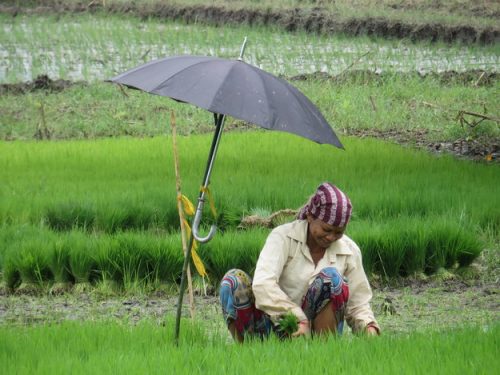 In developing countries such as Nepal, a feminization of labor has begun as male members seek livelihood opportunities in cities. This can be attributed to various climate and development related issues in the region. However, the importance of bolstering resilient livelihood practices is what counts for such communities to ensure a sustainable future.
In developing countries such as Nepal, a feminization of labor has begun as male members seek livelihood opportunities in cities. This can be attributed to various climate and development related issues in the region. However, the importance of bolstering resilient livelihood practices is what counts for such communities to ensure a sustainable future.
These days, readers frequently come across headlines spelling of the approaching doom and gloom of climate change. In South Asia, this sadly rings true for a region yearning to bolster its work-force and make its markets globally competitive. However, on the road to the coveted ‘developed’ tag, South Asia must keep an eye on its rear-view mirror, for climate change is larger than it seems.
Known for being a region marred with political and ideological discrepancies, South Asia’s climate change problems are transboundary in nature. Communities facing the brunt of declining springs, glacial melt impacts and water availability in the region, face a future of uncertainty. The key risks leading to the decline of the commons has been identified, they signal to South Asia becoming hotter, drier, wetter and saltier. These adjectives should strike a chord of ambiguity in any policymaker or planner, as the range of problems are vast and varied. With an increased threat on livelihoods, climate change is expected to effect on its pursuit of poverty reduction and GDP growth. A quoted figure of two percent, as found by a recent Asian Development Bank study, has compounded effects on any nation’s economy in the region.
Added to this, the region is not only infamous for its population density, but also for having a large percentage of its workforce employed in traditional means of livelihood. A sector that is unregulated with an unregistered workforce. This means that the nature of work is heavily dependent on natural forces. For example, such is its dependence on the monsoons that it is sometimes referred to as the finance minister of countries in the region. Its effect in determining agricultural productivity and water availability, has been seen time and time again. A drought in Balochistan province of Pakistan between 1998 to 2002, affected two million acres of arable land and 9.3 million livestock. Furthermore, with projected temperature rise and decreased monsoon precipitation having an impact on grain productivity across the floods plains of Ganga, means that food security will become an influential challenge to deal with. Even in modernized sectors of the economy, floods have impacted countless small businesses of poultry, garments and agro-processing units in Bangladesh for example.
It seems then that the road to its development then should be one that caters to its most vulnerable and marginalized. Communities that live in the most climate vulnerable regions such as arid and mountainous areas need special attention. An exodus of climate refugees within the region is underway as people leave their villages and lands behind to pursue livelihoods elsewhere. The region is known to receive one of the largest forms of financial remittances with Nepal being ranked as third global contributor in this regard. But these are coping mechanisms, what of adaptive livelihood? A large study spanning three river basins in South Asia-Upper Indus, Easter Brahmaputra and Koshi-have shown that households have changed their farming practices to better adapt to climate effects. The sowing of lesser water-intensive crops, adopting water conservation methods, and choosing smaller animals for livestock rearing are some of the strategies adopted.
Even nationally developed policies sing to the tune of resilient behavior as each South Asian country has reviewed its national-level climate policy. Common goals have been identified that all point towards the building of its peoples’ adaptive capacity. However, the need to identify sustainable adaptation practices, and for the private sector to step in and provide financial support for such practices to be scaled up, remains a challenge. The challenge of the hour remains, to be not just the pursuit of growth, but inclusive growth. This can only be made possible if partnerships are leveraged, diversification strategies are encouraged with backup, and most important of all, if adaptation is mainstreamed into national level policy. Till then, South Asia continues to dwell in the shadow of climate change.
To know more about these issues, click here for the link to an article written by Arabinda Mishra, Abid Hussain and Golam Rasul. For a detailed infograph on the issue please click here.
